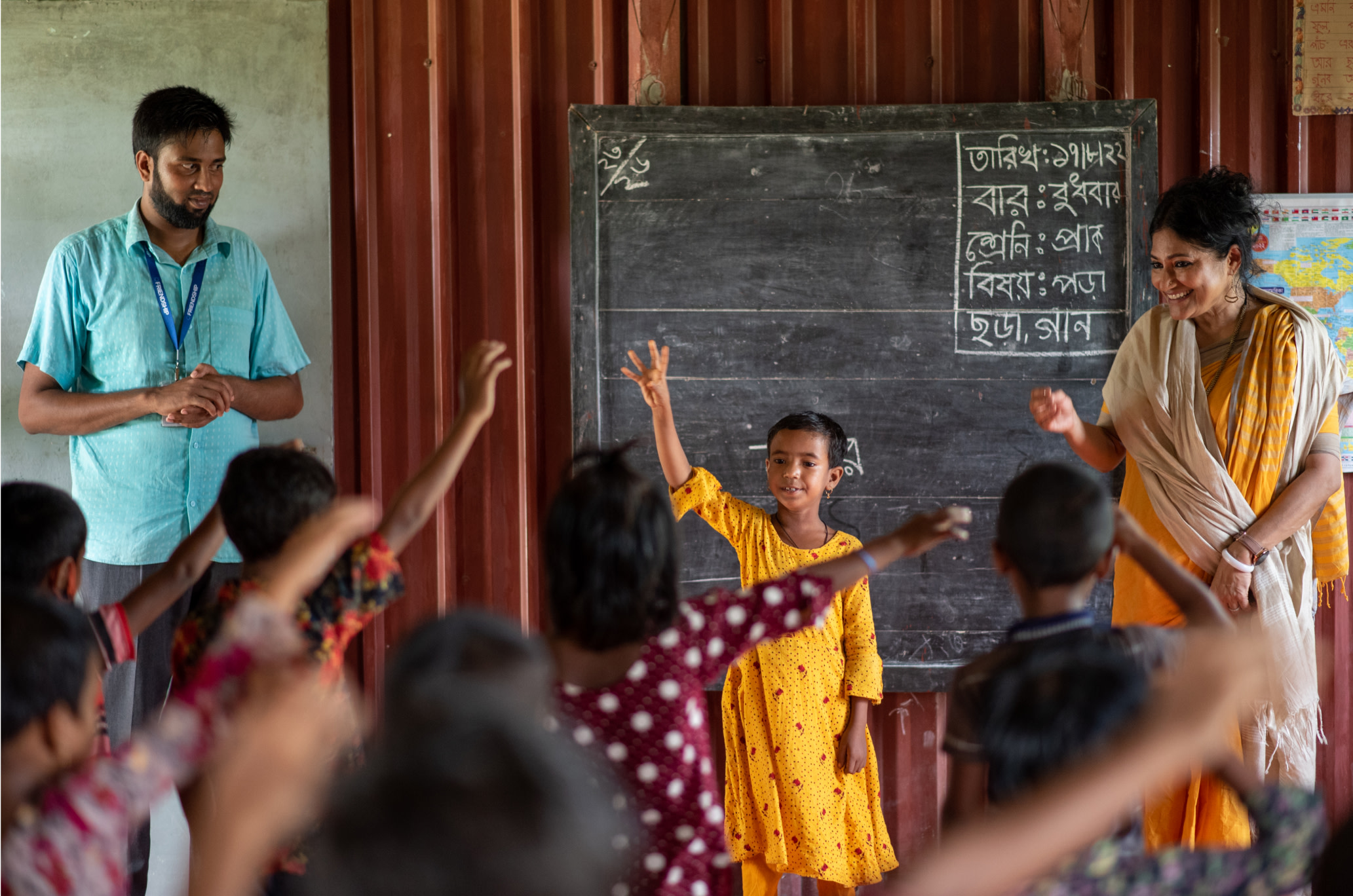Malala Fund works to ensure all girls can access and complete 12 years of education. We focus on secondary school, typically grades 7–12, when gender discrimination most often causes girls to leave school. Completing secondary school opens up opportunities for girls to make their own life choices, allowing them to reach their fullest potential.
As they get older, more girls drop out of school. Girls in low-income countries drop out at particularly high rates, as shown below.
Note: We list typical age ranges for the grade levels above. Actual age ranges vary by country.
Data source: UNESCO (2023) Visualizing Indicators of Education for the World (VIEW)
What keeps adolescent girls out of school?
Gender bias
At home, in the classroom and in wider society, deep-rooted beliefs about gender shape practices and policies that limit girls’ opportunities to learn.
Poverty
Families who can’t afford school fees are more likely to send boys than girls to school.
Conflict
Girls living in areas with conflict are 90% more likely to be out of secondary school than girls in areas without conflict.
Gender-based violence
In lower-income countries, 20% of girls who suffer sexual violence experience it in school, greatly impacting their learning and attendance.
Education quality
Poor education quality prevents students from learning what they need to thrive in today’s world and reinforces gender discrimination in school and society.
Inadequate facilities
Governments in lower-income countries lack the funds to provide good secondary schools, teachers and sanitation facilities where girls can properly manage their periods.
Early marriage & pregnancy
Nearly 19% of young women are married and 13% give birth before turning 18. Most married and pregnant girls drop out of school.
Climate change
By 2025 climate change will be a contributing factor in preventing at least 12.5 million girls from completing their education each year.
Why invest
in girls’ education?


Every child has a right to education. All girls — regardless of income level, social status, race, or cultural background — have a right to learn on equal terms with boys including access to quality teachers, learning materials and school facilities.

Quality education challenges gender beliefs and discrimination and improves girls’ ability to choose their own futures. When they can fully participate in society, politics and the economy, educated girls and women reshape gender roles and advocate for their own rights.

Educated women provide vital skills and knowledge to the workforce, driving economic growth and innovation. Women with secondary education earn almost twice as much as women with no education. When women earn more, they uplift their families and contribute to national economies.

Education equips girls with the know-how to help communities adapt to and mitigate the effects of climate change. In countries that invest in girls’ education, significantly less people die from droughts and floods than in countries with lower levels of girls’ education.

When girls are educated, communities experience fewer maternal and child deaths and less malnutrition. Girls are better equipped to make health care decisions for themselves and their families and are more likely to identify needed improvements to public services in their communities.
The fight for girls’ education won’t be won by girls alone. Join the movement.

For supporters
More than 122 million girls are out of school today. Your support helps break down the barriers holding them back.
For the public
Hear directly from the girls we work with as they share their challenges, aspirations and how they’re fighting for girls’ education.
For advocates
Engage with our policy publications to learn about the issues that impact girls’ education and how we can drive change for girls.

